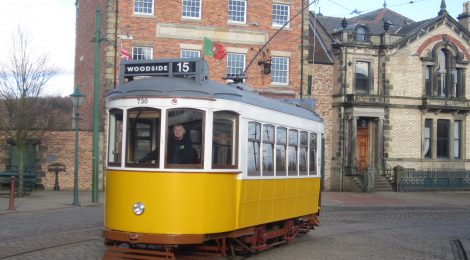
Introducing Lisbon 730
Happy new year to all readers, and we start the year with an exciting piece of news regarding the tramway…
Readers may have seen elsewhere the announcement from Big Heritage, in Merseyside, that they are taking over the operation of the Wirral Tramway and associated transport museum at Taylor Street. In the announcement, it was revealed that Lisbon tram No.730 will be moving to Beamish in the near future, following the change of operator. This information did initially appear before we were quite ready to reveal it, along with 730’s owners, the Merseyside Tramway Preservation Society (who are retaining a presence on the Wirral Tramway with some of their other tramcars), and the finalising of the arrangements hadn’t at that stage been concluded. However, it is now appropriate to say that it is true that 730 will be permanently joining the Beamish fleet, and that it is hoped that it will be put into service here in 2024.
Firstly, here is some background history…
The Lisbon ‘standard’ class emerged after the First World War, and saw a move to home-built tramcars (rather than imported vehicles from J. G. Brill in the USA) in order to mitigate against rising import costs during a period of political turmoil and social unrest. The trams were built by Carris (the Lisbon Tramways Company) – a shortening of Companhia Carris de Ferro de Lisboa, itself founded in 1872 and which remains the operator of the Lisbon tramways and buses today.
The design, which closely resembled the earlier Brill-supplied designs, incorporated a domed roof with a six bay body seating 24 passengers (with a further 21 standing), and in total weighed 10 ¾ tons and riding on Maley & Taunton 21E swing-link trucks. Metrovick motors produced 45 hp each (two per tram), these powerful motors being required to cope with the steep gradients on the system. The trams were fitted with six braking systems – air on wheel, hand on wheel, air on track, magnetic track, hand on track and run back brakes. Controllers were supplied by English Electric, being the DB1 type.
No.730 entered service in 1938, later being withdraw from service. I am hoping to discover more of its history in Lisbon and would be glad to hear from anyone who might be able to furnish us with more information and even photographs from this period of its life.
It was shipped to the UK in the mid 1990s and first stored at Colyton on the Seaton Tramway in Devon, with the idea that it might be regauged and used as a mobile shop there. The tram was then privately purchased and stored at Walton-on-Naze in Essex before ultimately being passed to the Merseyside Tramway Preservation Society (MTPS) in February 2004 It was restored over a two-year period, the work also including re-gauging the truck to run on standard gauge. In 2013 No.730 visited Beamish as part of the tramway’s fortieth anniversary celebrations, participating in the Great North Steam Fair in April of that year.
A regular performer on the Wirral Tramway, home of the MTPS, it was withdrawn for repainting when the COVID-19 Pandemic arrived. In 2023 the Wirral Tramway was transferred to a new operator, and the MTPS was advised that it would need to find new homes for some of its collection. No.730 was offered to Beamish, an offer which was enthusiastically accepted.
The tram is due to move to Beamish in early 2024. Whilst the final decision remains to be taken on livery (and we need to see whether any other work is required to make it suitable for regular operation at Beamish), it is likely that 730 will emerge in another local livery, to further reflect the north east’s tramway history. The livery proposed is that of the narrow gauge Darlington Corporation Light Railways, reflecting in part the narrow gauge origins of No.730 as well. No date for an entry into service has been determined, we’ll fit it in around the other works underway, not least the overhaul of Gateshead 10 which is now a priority for the team.
Below: After arrival at Taylor Street, the workshop and depot for the Wirral Tramway and base for the MTPS, 730 was stripped for overhaul and the truck removed for reconstruction and regauging.
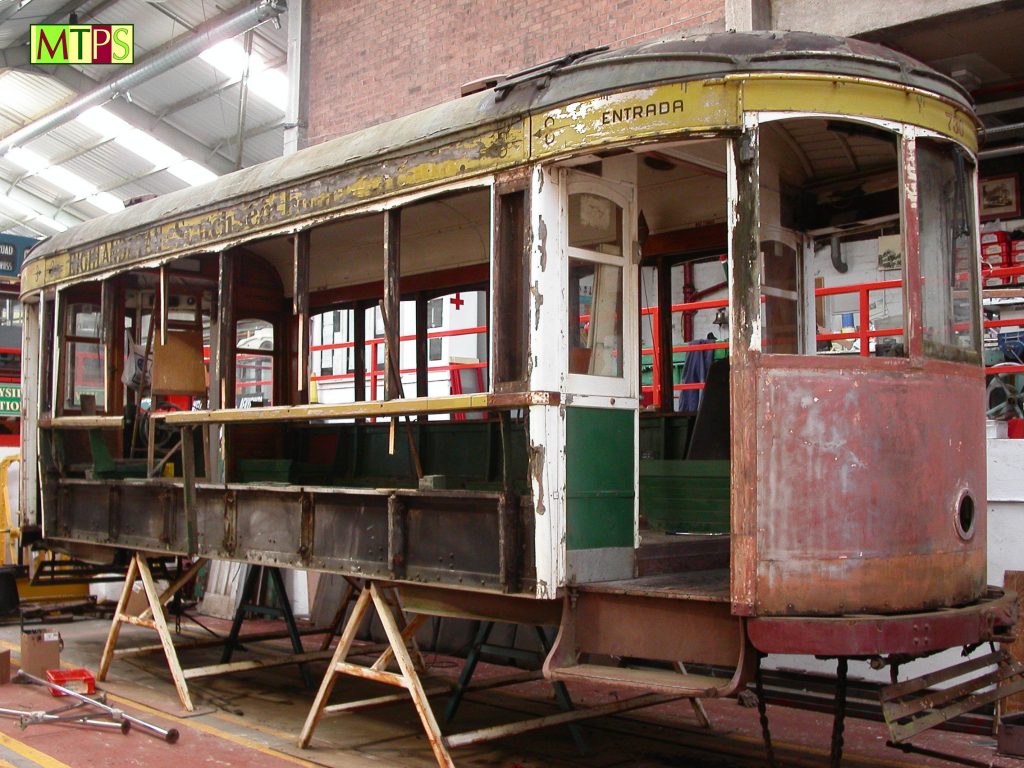
Below: The Lisbon standards were based on earlier Brill designs, but with a domed roof and other modifications made to suit their role in the capital.

Below: This view shows 730 in primer, as its restoration nears completion. This and the images above are courtesy of the Mike Mercer Collection.
Below: In 2013, Lisbon 730 visited Beamish as part of the 40th anniversary celebrations for the Tramway that year – an event titled ‘Our Friends – Electric’. Another visiting tram was Glasgow 1068, and the home fleet at that time included Blackpool 703 (as Sunderland 101) and the boat car, Blackpool 233. This view shows 730 at the Entrance.
Below: 730 is seen here waiting in the loop at Foulbridge.
Below: Lisbon and Oporto trams together – not usually used to each other’s company, the systems being of different gauges.
The 2013 event was a busy one for the museum – as other notable visitors to the event included Glasgow 1068 from the National Tramway Museum, Planet and train (running at Rowley Station) from the Manchester Science & Industry Museum, and Rocket (at the Waggonway), from the National Railway Museum.
Though the circumstances of 730 leaving the Wirral Tramway are, of course, disappointing for the MTPS, we can assure them that the the tram will have a good home at Beamish and will become an integral member of the fleet. The Tramway remains at the heart of the museum’s transport operation and we know it is a key attraction for many of our visitors, who will no doubt greatly enjoy riding on 730 once it enters service. I’d like to thank the MTPS for their confidence in us as the new custodian for 730, and for those who have had the practical work of extracting the tram and arranging for it to be moved to Beamish.




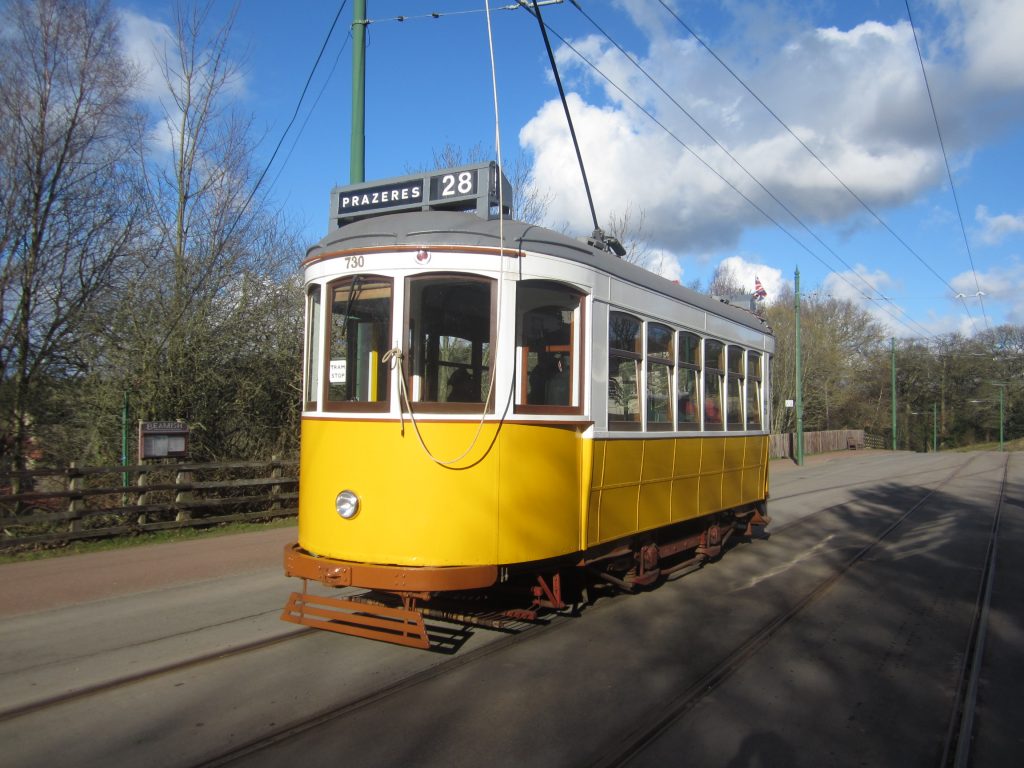
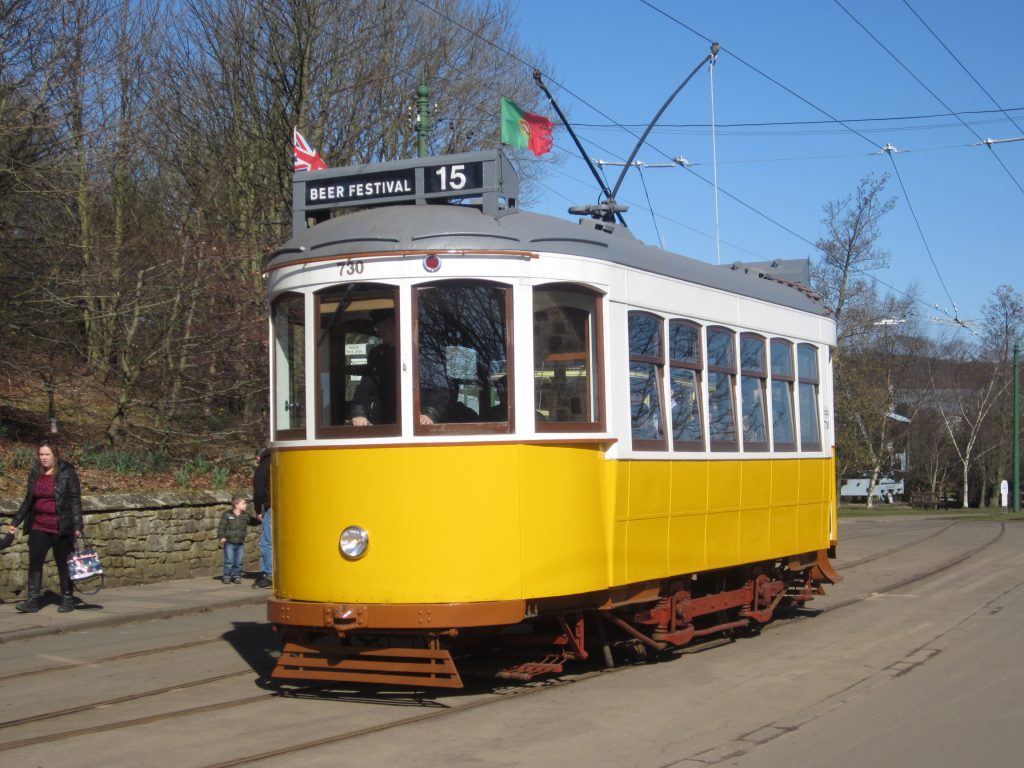
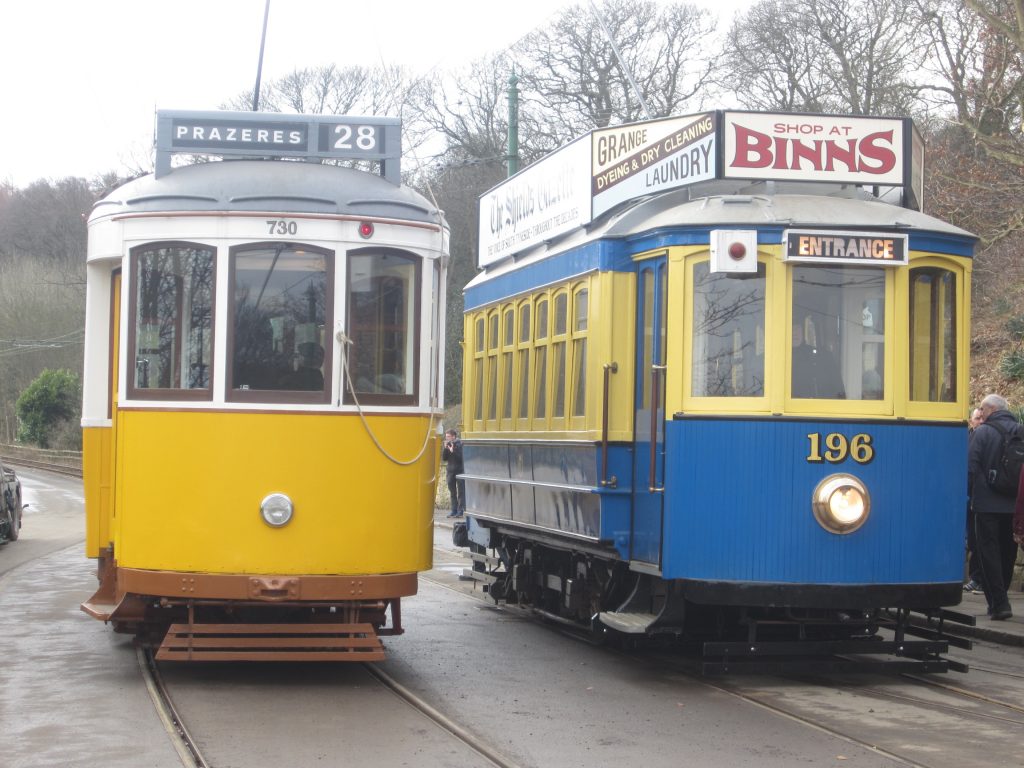





Excellent news. As a regular for the trams I hope there will be the opportunity to see it in action alongside 196 for a period and in Lisbon Livery.
Others will be able to confirm, but I’m sure it had some work done in 2021, so hopefully you will be receiving a tram that won’t need much work after the period of inactivity at Birkenhead.
Hi Andrew
I understand that work to repaint 730 had begun at Taylor Street, so we wil take stock of this when it arrives here. Because of the change in operator, we were unable to make an inspection of the tram, but based on our favourable experience of it in 2013, I was happy to accept it on the basis of what the MTPS were able to report. It is also a case of fitting in the repaint, and we have to work around the availability of contractors for that one. So the path to operation will be entirely separate to that of the current fleet, for which work on 10 is the priority. 196 will be withdrawn due to tyre-wear, but will not be overhauled immediately as there are some higher-priorities that will give more return on the investment of resource. But it will be done in due course and for now is on light duties to make the most of it!
Best wishes
Paul